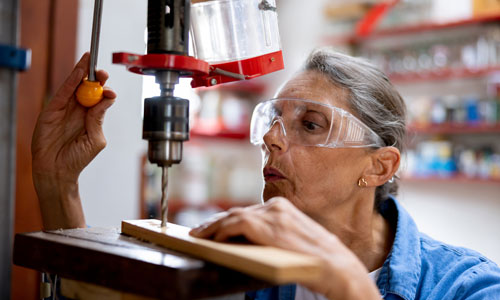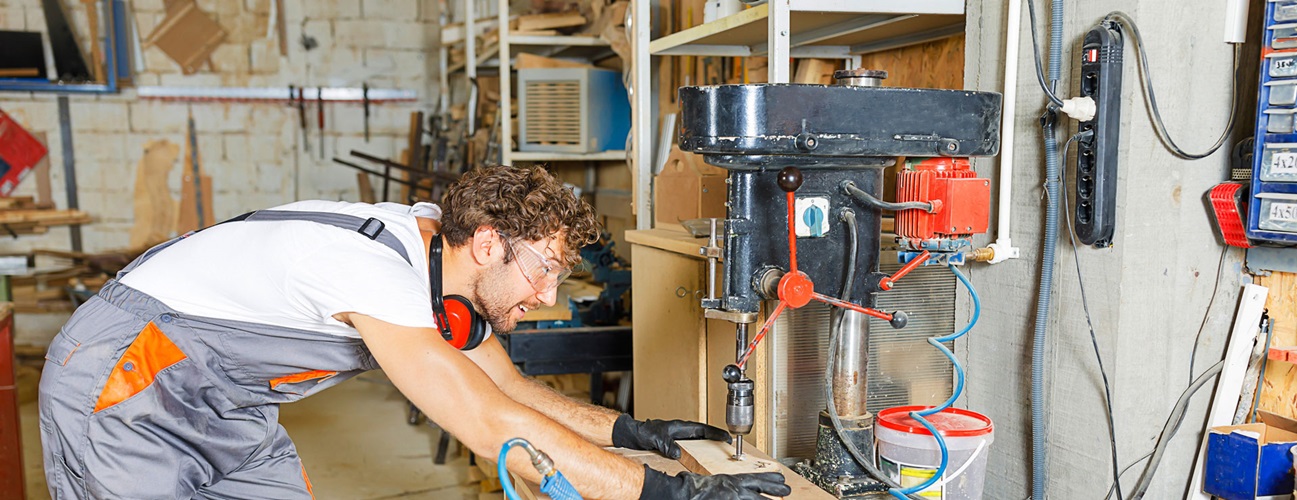Eye Injury Prevention
Featured Expert:
Your eyes are important parts of your body, so it’s critical to protect them. Eye injuries affect about 2.5 million people worldwide every year, but simple precautions can help prevent accidents and lessen damage when injuries do occur.
Anthony Gonzales, O.D., optometrist at the Wilmer Eye Institute, has several recommendations for eye injury prevention and what to do if an injury does occur.
Common Causes of Eye Injuries
“In our clinic,” says Gonzalez, “some of the most common causes of eye injuries are work related — most specifically, in a setting where welding is required, which increases the risk of a fast moving object to approach and possibly damage the eye.
“We also see a lot of blunt force injuries, such as an object that strikes the eye or face. This can be damaging not only to the eye itself but the skin and bone around it.
“Alternatively, an object may penetrate the eye. This is the most worrisome situation and the first thing we want to rule out, as this would require immediate surgical intervention.”
Preventing Eye Injuries at Home
Eye injuries are more common than many people think, with household products responsible for more than 125,000 serious eye injuries. “Injuries can occur commonly while cleaning, as chemicals can accidently splash into the eyes,” says Gonzales. “Dusting high-to-reach areas can also put the eye at risk for particles to get into the eye. Yardwork also puts the eye at risk due to fast moving objects possibly approaching the face.” He also notes that special attention should be paid to children and older adults, as the risk for falling is higher and trauma to the eye and face can occur.
You can help protect your eyes from injury at home by following these tips:
- Make sure the edges of furniture and home fixtures have no sharp edges.
- Install lights and handrails to improve safety on stairs.
- Be careful when opening bottles of wine or carbonated drinks.
- Wear chemical safety goggles when using hazardous solvents and detergents. Don’t mix cleaning agents.
- Turn nozzles away from your face before spraying.
- Wash your hands after using household chemicals.
- Use guards on all power equipment.
- Wear protective eye gear while using a lawn mower or weed trimmer, because debris may fly through the air.
Preventing Eye Injuries Outdoors and at Play
Each year, hospital emergency rooms treat nearly 40,000 victims of eye injuries from sports. “A lot of the blunt force injuries to the eye we see in the clinic is sports related,” says Gonzales, “usually from soccer or racquetball. Any sport that has a fast object approaching you puts you at a risk.”
Follow these tips to help keep your eyes safe:
- Wear sunglasses that help protect your eyes from UVA and UVB rays when you are outside. Wear them even on cloudy days.
- Never look directly at the sun, including during an eclipse.
- Read and follow directions before playing games or using equipment.
- Wear safety goggles or glasses during sports and leisure activities.
- Wear a helmet with a polycarbonate face mask or wire shield during high impact sports.
- Wear safety goggles while using a device that shoots pellets, arrows, paint balls or other projectiles.
- Wear safety goggles when handling fireworks.
What You Need to Know Protecting Your Eyes in the Workplace

First Aid for Eye Injuries
First aid for eye injury primarily depends on the type of injury.
- An object protruding from the eye: Call 911 immediately.
- A blow to the eye: Apply a cold compress without putting pressure on your eye. You can also take pain medication, such as acetaminophen or ibuprofen. If your eye hurts when it moves, if there is bleeding or bruising, or if there are changes in eyesight, call a doctor.
- Scratch or laceration: Stay calm, keep the eye closed, do not try to remove anything from the eye, wear sunglasses if you need to reduce sensitivity to light and have someone take you to the nearest emergency room for evaluation.
When to Obtain Health Care
Go to an eye health care practitioner if you have any signs of eye problems, including:
- Redness
- Swelling
- Excess tears
- Tired, aching or heavy eyelids
- Eye pain
- Problems focusing
- Muscle spasms of the eye or eyelid
- Frequent headaches







